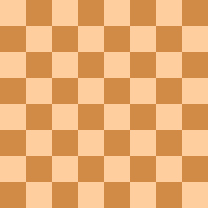Our website is made possible by displaying online advertisements to our visitors.
Please consider supporting us by disabling your ad blocker.
Hedgehog (chess)
| h | g | f | e | d | c | b | a | ||
| 1 |  | 1 | |||||||
| 2 | 2 | ||||||||
| 3 | 3 | ||||||||
| 4 | 4 | ||||||||
| 5 | 5 | ||||||||
| 6 | 6 | ||||||||
| 7 | 7 | ||||||||
| 8 | 8 | ||||||||
| h | g | f | e | d | c | b | a | ||
Black's basic Hedgehog formation
The Hedgehog is a pawn formation in chess adopted usually by Black that can arise from several openings. Black exchanges the pawn on c5 for White's pawn on d4, and then places pawns on the squares a6, b6, d6, and e6. These pawns form a row of "spines" behind which Black develops their forces. Typically, the bishops are placed on b7 and e7, knights on d7 and f6, queen on c7, and rooks on c8 and e8 (or c8 and d8). Although Black's position is cramped, it has great latent energy, which may be released if Black is able to play ...b5 or ...d5 at some point. These pawn breaks are particularly effective because White usually places pawns on c4 and e4 (the Maróczy Bind).
Previous Page Next Page


